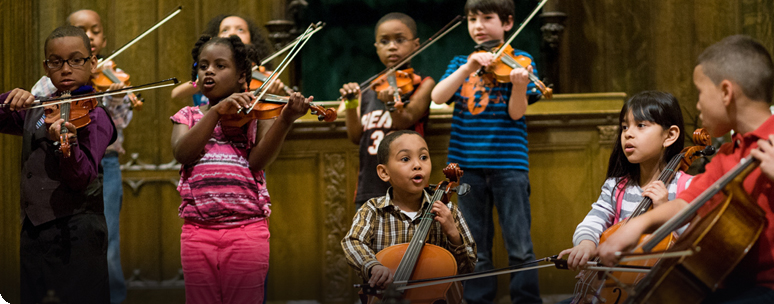Sonata Series #1: Program Notes and Direct LinkOur first Sonata Series event features CMW Resident Musicians Jesse Holstein and Lisa Sailer, with guest pianist Ivan Tan, performing works by J.S. Bach, Anthony R. Green, Dana Lyn, and Jessie Montgomery.
SONATA SERIES #1
THE PROGRAM: Sonata No. 1 in G Major for viola da gamba and harpsichord, BWV 1027 …on top of a frosted hill… Performed by Lisa Sailer, viola, and Ivan Tan, piano
Rhapsody No. 1 Performed by Jesse Holstein, violin *** PERFORMER BIOS: Guest pianist Ivan Tan is equally at home playing classical piano or rocking out on a keytar. Ivan has performed in venues ranging from the Apple Hill Center for Chamber Music to the Rochester Fringe Festival. He is on faculty at Brown University, where he teaches courses on music theory, and is a Ph.D. candidate in music theory at the Eastman School of Music, where he is completing a dissertation on keyboard performance in 1970s progressive rock. Ivan also holds degrees from Brown and SUNY Purchase in music and applied mathematics. Jesse Holstein, violinist and violist, has been a Resident Musician at CMW since 2001. He was a founding member of the Providence String Quartet. Prior to studying with Marilyn McDonald at Oberlin and James Buswell at New England Conservatory, he worked with Philipp Naegele in Northampton, MA. An active recitalist, orchestral and chamber musician, Jesse is currently concertmaster of the New Bedford Symphony. He has performed at the Bravo! Festival, the Montana Chamber Music Festival, the Bay Chamber Concerts, the Worcester Chamber Music Society, The South Coast Chamber Music Series, the Rhode Island Chamber Music Concerts, and the Apple Hill Center for Chamber Music, among others. In 2009 Jesse was a Violin Professeur at L’Ecole de Musique, Dessaix Baptiste in Haiti and is currently on faculty at Brown University. One of his interests is how Buddhist mindfulness practice and meditation intersects with teaching and performing music. Lisa Sailer, violist, joined CMW in 2019. In addition to teaching individual lessons, she directs the newest and youngest ensembles in CMW’s Daily Orchestra Program. She also teaches at the Community Music Center of Boston, and was a Teaching Artist Fellow in the Massachusetts Cultural Council’s META (Music Teachers/Teaching Artists) Fellowship’s first cohort. A certified Alexander Technique teacher, Lisa incorporates body awareness and freedom of movement into her string teaching. She has been a guest Alexander Technique teacher and Teaching Assistant at the Apple Hill Center for Chamber Music in New Hampshire, and has run Alexander Technique workshops in Alaska, Florida, and in between. She earned a Bachelor of Music in violin performance from SUNY Purchase and a Master of Music in viola performance from The Boston Conservatory. When not playing or teaching music, Lisa can be found doting upon her two cats and her sourdough starter. COMPOSER BIOS: Johann Sebastian Bach (1685 – 1750) was a German composer and musician of the Baroque period. He is known for instrumental compositions such as the Brandenburg Concertos and the Goldberg Variations, and for vocal music such as the St Matthew Passion and the Mass in B minor. Composers and musicians for generations have looked to Bach’s music for inspiration, including participants in Community MusicWorks’ annual Bach to the Future all-night Bach marathon, which showcases Bach’s posse of fanatical followers, ranging from classical string musicians to noise artists to electronic and experimental composers and musicians. This year, our annual Bach Marathon, curated by Sakiko Mori, takes to the airwaves in a glorious 12-hour electromagnetic tribute to J.S. Bach transmitted to your radio and laptop on WELH, 88.1 on Friday, November 13 at 7pm to Saturday, November 14 at 7am. The creative output of Anthony R. Green (composer, performer, social justice artist) includes musical and visual creations, interpretations of original works or works in the repertoire, collaborations, educational outreach, and more. Behind all of his artistic endeavors are the ideals of equality and freedom, which manifest themselves in diverse ways in a composition, a performance, a collaboration, or social justice work. As a composer, his works have been presented in over 20 countries and he is currently a fellow at the Berlin University of the Arts. More at www.anthonyrgreen.com Violinist-composer Dana Lyn has received commissions from Brooklyn Rider, the Apple Hill String Quartet, the Ireland’s National Arts Council and the Portland Chamber Music Society. Also an improviser and a well-versed traditional Irish fiddle player, her projects include a mixed sextet, “Mother Octopus“, a collaboration with actor Vincent D’Onofrio and a duo with guitarist Kyle Sanna. Dana is a recipient of the 2018 ACF’s “Create” Commission and the 2020 NYFA Women’s Fund Grant. More at www.danalynmusic.com Jessie Montgomery is an acclaimed composer, violinist, and educator. She is the recipient of the Leonard Bernstein Award from the ASCAP Foundation, and her works are performed frequently around the world by leading musicians and ensembles. Her music interweaves classical music with elements of vernacular music, improvisation, language, and social justice, placing her squarely as one of the most relevant interpreters of 21st-century American sound and experience. Her profoundly felt works have been described as “turbulent, wildly colorful and exploding with life” (The Washington Post). More at www.jessiemontgomery.com
PROGRAM NOTES: Sonata No. 1 in G Major for viola da gamba and harpsichord, BWV 1027 Having grown up in a copyright-dominated world that esteems the role of “originality” as part of the artistic process, modern-day listeners may be surprised by the frequency at which Baroque composers would rearrange their own pieces (or even pieces by other composers) for different instrumental combinations. The ever-busy Bach was no exception; several of his most beloved pieces actually originate in earlier works, or were mined for instrumental passages in his cantatas. One example of Bach’s propensity for rearranging is the G major sonata for viola da gamba and harpsichord (BWV 1027), likely written around 1739, but adapted from an older trio sonata for two flutes and continuo Bach had written in the 1720s (the older sonata itself may stem from an earlier work for two violins and continuo). In creating this new arrangement, Bach assigned one of the flute parts to the keyboardist’s right hand and gave the other to the viola da gamba, lowering it by an octave to fit the instrument’s natural register. The keyboardist’s left hand, largely preserved from the older sonata, provides an active, independent line equally important as its two “melodic” partners. In this spirit, we perform the G major sonata on viola and piano, with the viola occasionally playing up an octave from the gamba part to suit its register. Like most sonatas from this era, BWV 1027 consists of four movements in a slow-fast-slow-fast arrangement. In the first movement, the viola and piano trade off long lyrical phrases, eventually landing on a harmonic cliffhanger. The ensuing second movement presents a more contrapuntal texture, with all three voices (viola, piano right hand, and piano left hand) getting in on the fugal fun. The third movement provides a brief excursion into E minor, with arpeggiated chords decorating a simple, chromatically descending bassline, and ending on yet another cliffhanger. We pause briefly before launching into the fourth and final movement, which returns to the jolly mood and imitative texture of the second movement. The “short-short-long” rhythm that opens the movement and recurs throughout is reminiscent of the bourrée—a Baroque dance. …on top of a frosted hill… Notes by composer Anthony R. Green: After having overly successfully premiered Refraction Aberrance, a work for cello and variable ensemble of harp, guitar, and piano (thought to be impossible, but proved wrong), I knew I had to compose another piece for Mathieu D’Ordine – an amazing cellist who is musical and metaphysically sensitive. Sharing many musical interests, Mathieu suggested we perform an ambitious recital – including the Myaskovsky sonata and the Chopin sonata. I knew this would be a perfect time to also compose a piece for us to perform together, hence … on top of a frosted hill …The work began as a piano improvisation that screamed for another voice in my ear. That voice was found through the cello, and the relationship that developed between the parts formed organically. This work is consciously similar to a previous work of mine – Seeing Through Heaven for flute and piano. However, this work is much more concentrated in its environment. Yet, this piece quotes one of my favorite childhood church songs. The mountainous trajectory very much belongs to the Boulder environment, which has significantly influenced my composition for the past 3 years, and I’m sure it will for the years to come. a current took her away…
The “her” in this case is a plankter (singular for plankton). Plankton are micro-organisms whose main function is to convert sunlight into chemical energy. They are the base of the marine food chain and are known as “ocean drifters;” plankton do not swim of their own accord, but rather drift with oceanic currents. Decreasing sea ice has caused plankton blooms to happen earlier and further north each year, affecting the feeding and migration cycles of all of the animals that depend on them for survival. This piece is describing a lone plankter, drifting along a warmer than usual Arctic current, for much longer than expected… Rhapsody No. 1 This work for solo violin is the first Rhapsody in a series that will be written for six different instruments. The collection of six solo works pays homage to the tradition of J.S. Bach’s solo violin Sonatas and Partitas, his Suites for solo cello and the six solo violin Sonatas of Eugène Ysaÿe. In paying tribute to this archetypal tradition, I have chosen to elaborate by writing for a variety of solo voices across instrument families—violin, viola, flute, bassoon, and double bass—so that the final Rhapsody in the cycle is a five part chamber work for all of the instruments in the collection. This piece represents my excitement for collaboration, as each solo work is written in collaboration with the premiere performer, and my love for chamber music as a staple in my current output. *** Sonata Performance video by Atomic Clock, with audio by Jim Moses
UPCOMING CMW EVENTS: Bach to the Future/Bach to the Airwaves: the All-Night Bach Marathon THANK YOU FOR JOINING US! Read our Season 24 Program Book here: Learn more about CMW, sign up for our enews, and check our calendar at
|


